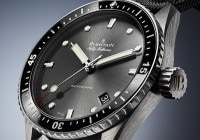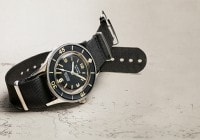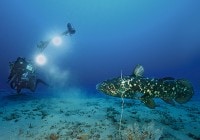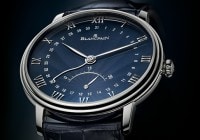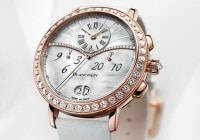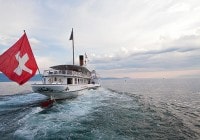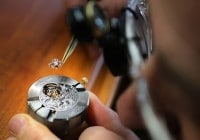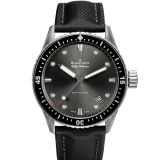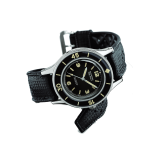
Search in Issues
Chapters
List of parts
Chapter 1
Fifty Fathoms BATHYSCAPHE
Woven into the history of the Fifty Fathoms is the Bathyscaphe version, named after the world’s deepest diving vessel.
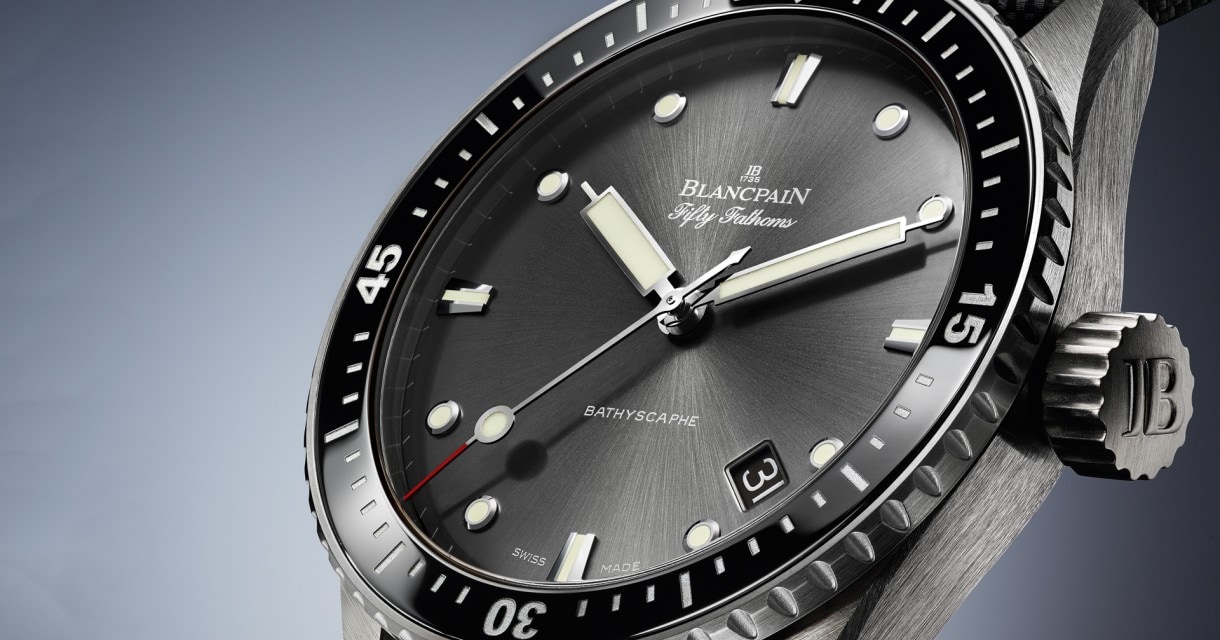
Circle within a circle. Subplot within a plot. Legend within a legend. That is the place in history for the Blancpain Bathyscaphe. Now in its 60th year, the Fifty Fathoms—the watch itself, the lore surrounding its creation, and its primacy as the diving watch of choice for the who’s who of the world’s military and iconic divers such as Jacques-Yves Cousteau—all are the stuff of legend. Woven into that legend is a second legend, related certainly but with its own distinct heritage, that of the Blancpain Bathyscaphe.
Dedicated divers, watch connoisseurs and Blancpain aficionados are familiar with the conception of the original Fifty Fathoms. Blancpain’s then CEO, Jean-Jacques Fiechter, a passionate diver, created the watch as a purposeful diving instrument. Banish all thoughts of today’s diving watch milieu, where, notwithstanding enormous performance capabilities, most are worn for their sporting visual statement. The 1953 original was intended to fulfi ll the needs of real divers and, indeed, to be sold in diving shops as an essential element of a scuba kit or issued to military personnel. One of the many defining elements of that original 1953 watch, and the variations which followed from it, was large size.
Wristwatches of the day were, in general, petite with diameters for men’s timepieces ranging between 32 mm and 34 mm. By today’s standards, that size is even considered small for women’s watches. But the Fifty Fathoms was not to be a dress watch, and to maximize its legibility, its original sizes varied between 40 and 41 mm, monstrously large for a watch at the time but justified and necessary as a diving instrument. Underscoring its place as a no-nonsense serious piece of equipment, the standard practice for several navies was to pass out the Fifty Fathoms watches to their divers before a dive along with the rest of the gear — masks, tanks, fins, depth gauge, etc. — and collect the watch with all the other gear following the dive.
Different declinations were issued by Blancpain over the years, all faithful to the intended diving use. In approximately 1956 or 1957, Fiechter had the idea to offer a smaller diameter alternative that would better conform to the fashion dictates of the time. In short, a watch whose size would be adapted to daily wear. Thus was born the “Bathyscaphe”.
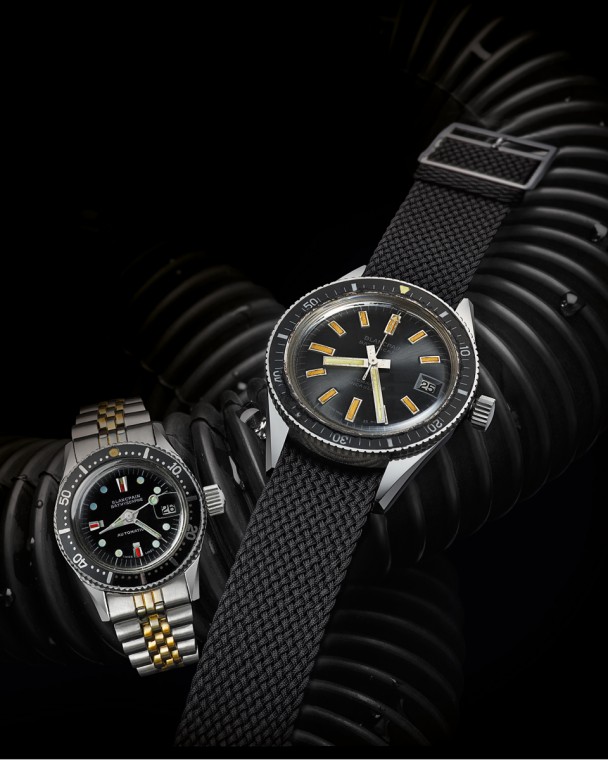
TODAY’S BATHYSCAPHE enters the Fifty Fathoms Collection as its historical predecessor: a smaller-sized sport watch.
The use of the name “Bathyscaphe” for this 1950’s general use timepiece seems, however, somewhat anomalous. The mission of the original Fifty Fathoms was to be the perfect instrument for a naval diver’s nighttime plunge into an enemy’s harbor to sink battleships — by any measure a no-nonsense pursuit. But then ponder the mission of the namesake of the Bathyscaphe watch, which was a diving vessel conceived to do nothing less than achieve a dive to the deepest part of the earth, the bottom of the Mariana Trench, an inky world 10,000 meters beneath sea level. On the same scale of purposefulness that would fall somewhere between driven and maniacal. So the name “Bathyscaphe” appended to the watch should have implied an even more radical dedicated timing instrument rather than a timepiece to wear equally underwater or at the country club.
Regardless of whether the Bathyscaphe name implied a more extreme timepiece or not than the general Fifty Fathoms line, there is no doubting the stature of the Bathyscaphe itself as a pioneering diving vessel and the logical connection between it and a pioneering diving watch. The Bathyscaphe vessel was conceived by Auguste Piccard, a Swiss, whom Jean-Jacques Fiechter came to know after they met at a diving conference. Piccard’s Bathyscaphe vessels were somewhat of a cross between a diving bell and submarine with attributes of both but, at the same time, important differences. Unlike a diving bell, the Bathyscaphe was self-propelled. Unlike a submarine, air could not be used to ascend from the depths. Instead, iron pellet ballast was released and left on the ocean floor. The achievement of this half-bell, half-boat vessel was enormous, as the third version built, the Trieste, purchased by the US Navy, reached the deepest known point on the Earth’s surface, named the Challenger Deep within the Mariana Trench (located in the Pacifi c off the coast of Guam).
The name Bathyscaphe was in one sense perfect for Blancpain’s expansion of the Fifty Fathoms line as both it and the Fifty Fathoms represented trail blazing efforts to conquer the deep. Over the three decades that Fiechter led Blancpain, he evolved the core Fifty Fathoms and the Bathyscaphe in parallel, maintaining the name “Bathyscaphe” for the smaller diameter
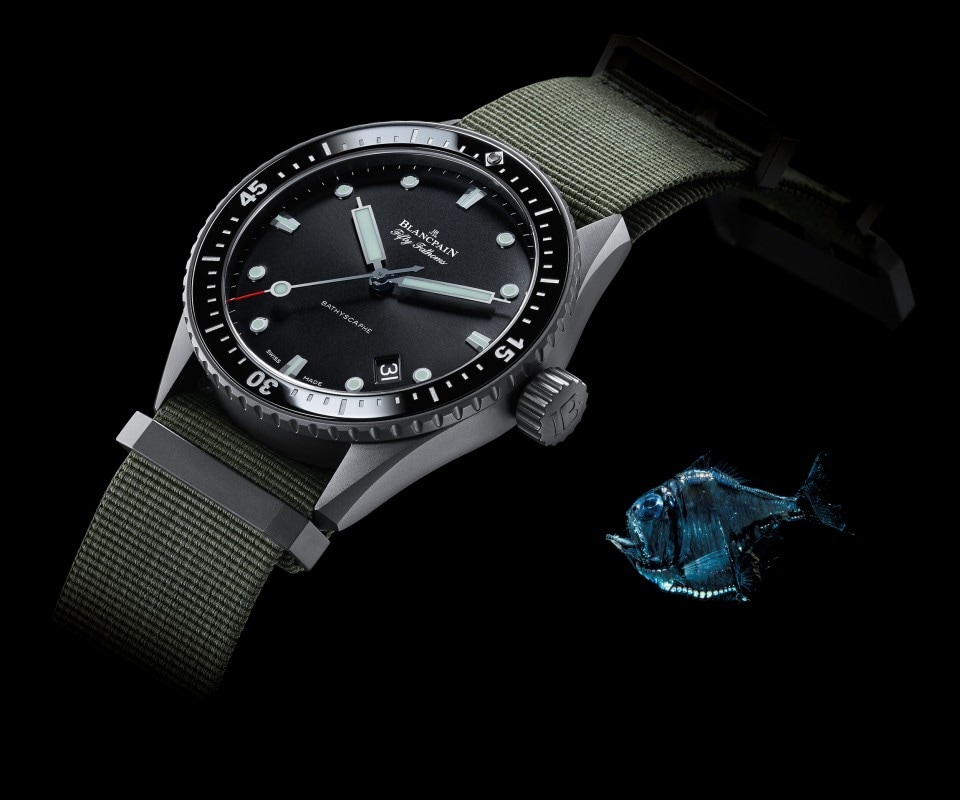
Both THE MEN’S AND WOMEN’S MODELS boast amagnetic silicium balance spirals.
models (except for a few Bathyscaphes that were produced for the French watch company LIP, that carried the LIP trademark in place of the Bathyscaphe name).
With Blancpain’s new Bathyscaphe that debuted in Basel 2013, the tradition that began with Fiechter is reignited. As with the original, the new Bathyscaphes carry much of the DNA of the Fifty Fathoms but in a smaller size. All the models, with the exception of the X-Fathoms, in the current Fifty Fathoms line are 45 mm in diameter; the men’s Bathyscaphe is 43 mm and the women’s model is 38 mm (the first time a smaller-sized women’s model has been in the Fifty Fathoms collection).
Aesthetically, the new Bathyscaphes plainly reveal the family connection but assert themselves with distinguishing features. The hands have a unique shape with defining rectangular elements that recall the hands from the original Bathyscaphes of the 1950’s. Influences from the originals are found, as well, in the shape of the crystal, which has a strong bombé profile. Links to the early models appear on the dial with dot and bar shaped indexes and an absence of numerals.
All the models in the current Fifty Fathoms collection have been fitted with sapphire unidirectional rotating bezels. The Bathyscaphe bezels also feature unidirectional rotation but have been fashioned in ceramic with carved and filled Liquid Metal® markings. Liquid Metal® is a proprietary alloy that is produced utilizing a complex recipe that depends not only on the ratio of metals but the manner in which they are heated and combined. Not only does this complex bezel possess a unique visual allure, but it is, as well, extraordinarily robust, with high scratch resistance and essentially no risk of breakage.
The movement powering the men’s Bathyscaphe models is derived from the in-house caliber 1315. This is a three main spring barrel, free sprung movement that achieves a five-day power reserve. There is one improvement to the 1315 which debuted with the X-Fathoms a year ago, a silicium balance wheel spiral. There are multiple performance enhancements that the silicium spiral brings with it. First, owing to its perfect shape, timing precision of the watch is increased.
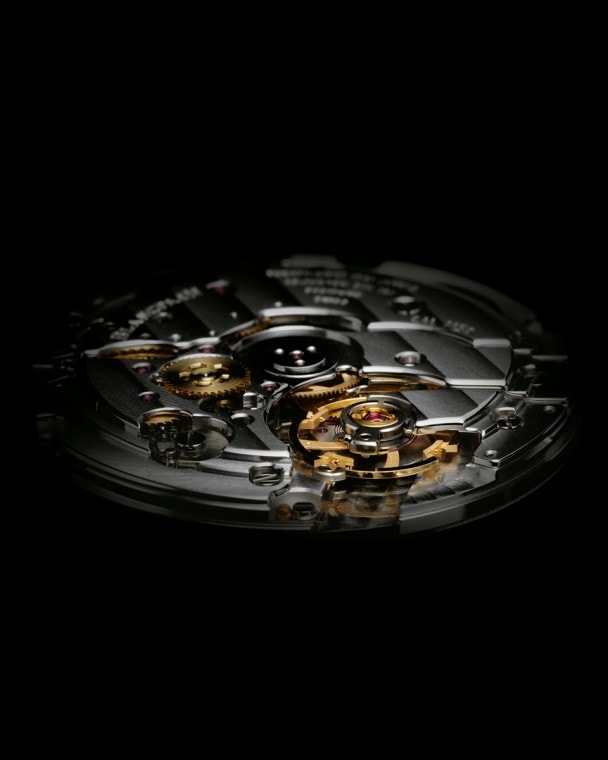
The women’s model is powered by the caliber 1150 fitted with an inertially regulated balance wheel.
So, too, is isochronism. Isochronism is the measure of how the performance of a timepiece changes as the main spring barrel unwinds over time. The more steady the performance as the watch unwinds over time, the better. There is one other dimension to the advantages of the silicium spiral: resistance to magnetic fields. Commonly used metallic spirals are vulnerable to strong magnetic fields. If the field is strong enough, the coils of metallic spirals may become magnetized and remain that way, even after the watch is removed from the influence of the field. This residual magnetism changes the properties of spiral as adjacent segments of the spiral may attract or repel each other. As a result of this residual magnetization, the running rate of the watch will be altered. The classic answer to this magnetization risk is to shield the movement with a soft iron inner case. Both the original Fifty Fathoms from 1953 and many models of the current Fifty Fathoms Collection adopt this approach as the diving environment (and in the case of the military, the combat milieu) is rife with strong magnetic fields. However, such shielding is rendered unnecessary with a movement equipped with a silicium balance wheel spiral as silicium is non-magnetic and not susceptible to residual magnetization. In turn, this yields yet another benefit. If a soft iron casing is used to protect the movement from magnetic fields, there is no sense offering a clear case back with the timepiece. This is because the movement is completely hidden by the inner iron case. Nothing to see here; please move on. So there is a choice to be made between magnetic resistance and a transparent back. However, silicium offers the best of both worlds: resistance to magnetism and a clear unobstructed view of the movement. Accordingly, the new Bathyscaphe has been fitted with a solid gold rotor, which has been given a NAC (a platinum alloy) coating and carved out to display the Blancpain logo in relief.
For the men’s models, two different case materials are offered: brushed stainless steel and ceramized titanium. To produce the ceramized titanium case version, an oxidation process is employed which endows the surface with a hardness like that of ceramic materials. The result brings together properties for which both titanium and ceramic are prized: the light weight of titanium and the hardness and resistance to scratches associated with ceramic.
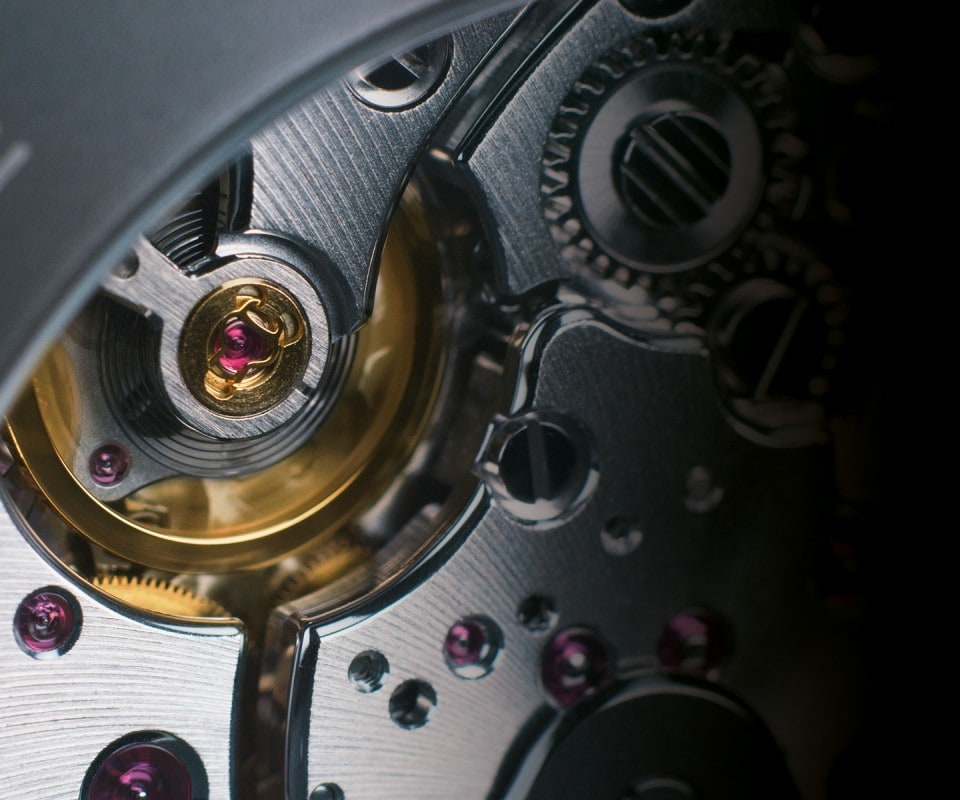
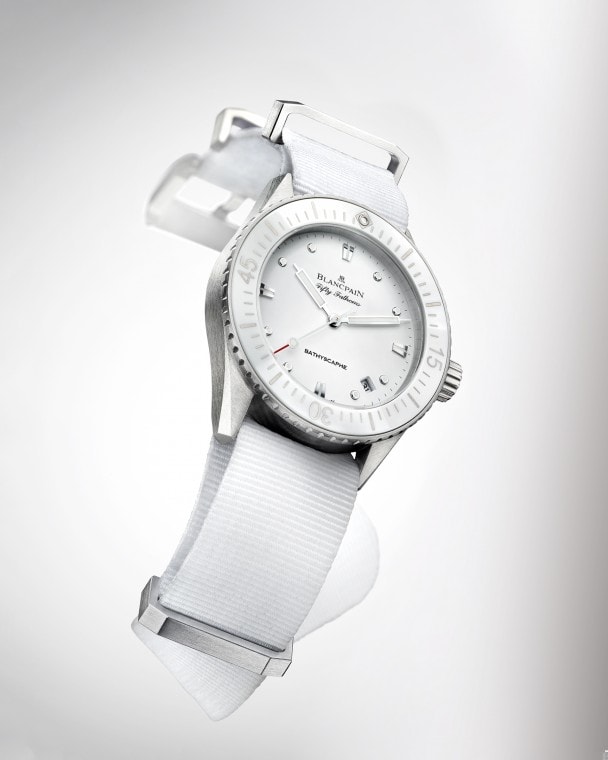
The WOMEN’S BATHYSCAPHE is the first small-sized women’s model in the Fifty Fathoms collection.
Blancpain has never before offered a smaller diameter women’s model within the Fifty Fathoms collection. With the new Bathyscaphe, that omission has been corrected. Still visually dramatic, with its Fifty Fathoms roots as strongly reflected as with the men’s models, the woman’s version nonetheless features feminine touches, such as the use of white as the color for the ceramic bezel, dial and strap. The in-house movement is derived from Blancpain’s classic two-barrel, four-day power reserve 1150, which in the women’s Bathyscaphe is equipped with a free sprung inertially regulated balance fitted with a silicium spiral.
All of the new Bathyscaphes are fitted with either sail cloth or NATO straps. Both styles of strap are extraordinarily robust and resistant to water damage. Respecting tradition, the NATO style strap, instead of being attached to the lugs with spring bars, is threaded over bars between the lugs and passes underneath the watch case. This style is at once boldly sporty and extremely comfortable to wear.

